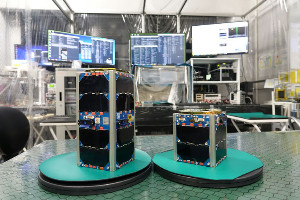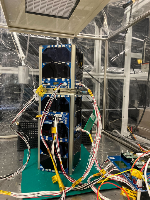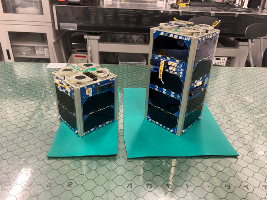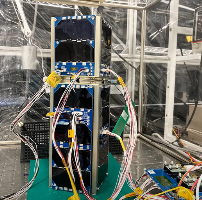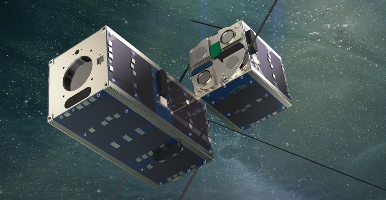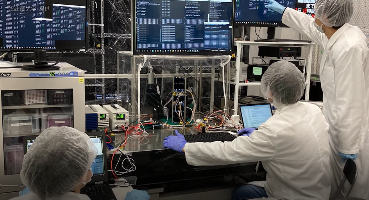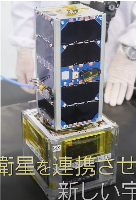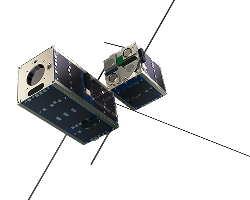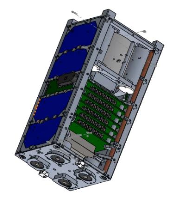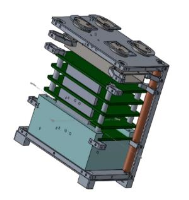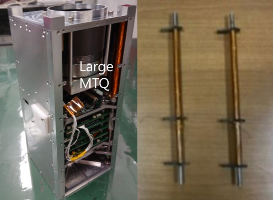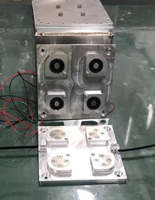| Spacecraft name | MAGNARO |
|---|---|
| Spacecraft type | CubeSat |
| Units or mass | 2U |
| Organization | Nagoya University |
| Institution | University |
| Entity | Academic / Education |
| Country | Japan |
| Oneliner |
Joint CubeSats are separated after spin-up and then continue formation flying. |
| Description |
Composed of 2U and 1U cubesats, and they are connected with the magnetic force between magnetic holders on the 2U cubesat and iron plates on the 1U cubesat. In the mission, MAGNARO is spun up to 720 degrees/s, and 2U and 1U satellites get 1.3m/s and 0.63 m/s delta-V, respectively by the separation. After that, with aero drag force, MAGNARO changes its orbit and forms a constellation in along-track formation. For high speed rotation, MAGNARO has large magnetic torquers that are also used as structure. In addition, to decrease the phase angle error in high speed rotation, MAGNARO performs precise attitude determination using an acceleration sensor. Four large magnetic torquers that can generate a total of 8 Am^2 in magnetic moment was developed and proved to be able to support the 2U satellite structure in BMM phase model. **Extended communication distance by relay through two satellites in formation flight **- Communication message relay by two satellites in formation flying (Mission 2) allows extended range for various experiments of long-range communication by amateur radio (long-range repeater). Two satellites, MAGNARO-A and B, share the information of housekeeping data in each satellite and the messages to be relayed. On-board Communication systems for communication with ground station are also used for inter-satellite communication. MAGNARO-A will receive AX.25 packets set in UNPROTO with MAGNARO-A and MAGNARO-B as the path. MAGNARO-A satellite receives packets transmitted from ground station in even minutes and MAGNARO-B satellite only transmits in odd minutes in order to minimize the interference between uplink and downlink. The details of the protocol will be published together with the mission status in the official website Formation flight - Propellant-less formation flight using high-spin deployment and differential atmospheric drag. In this formation flight, two satellites (MAGNARO-A and B) are initially connected magnetically, and separated to make a formation in-orbit for armature Inter-satellite communication. The satellites relative orbits are actively controlled with atmospheric drag force, and the relative attitude is actively controlled with magnetic torque by MTQ. In the formation flight, the orbit is determined using GPS, and the attitude is determined using both magnetometer and Sun sensor. With these methods, nanosatellites can easily achieve formation flight and provide inter satellite communication capability. Key demonstration for energy efficient technology, which allows long-range communication for Mission 1. MAGNARO mission provides longer range amateur communication service than the range provided by a single satellite, which provides unique training and technical investigation opportunities. MAGNARO is a unique satellite with spin separation and capability of formation flying (formation range varied from 2km to 500km). The satellites in formation flight allow communication relay through inter-satellite link which extends communication range by thousands of kilometers. This feature allows the amateur community to test communication relay technology on nanosatellite platforms. |
| Sources | [1] [2] [3] [4] |
| Photo sources | [1] [2] [3] [4] |
| Subsystems sources | [1] |
| Keywords | Formation flying, Fast spin-up |
Related Spacecraft
| Name | Status | Launcher | Launch | Orbit |
|---|---|---|---|---|
| MAGNARO A Parent (MAGnetic separation Nano-satelite with FoRmation flight and cOnstellation) | Launch failure | Epsilon | 2022-10-12 | Launch failure |
| MAGNARO B Child (MAGnetic separation Nano-satelite with FoRmation flight and cOnstellation) | Launch failure | Epsilon | 2022-10-12 | Launch failure |
Last modified: 2023-12-16
